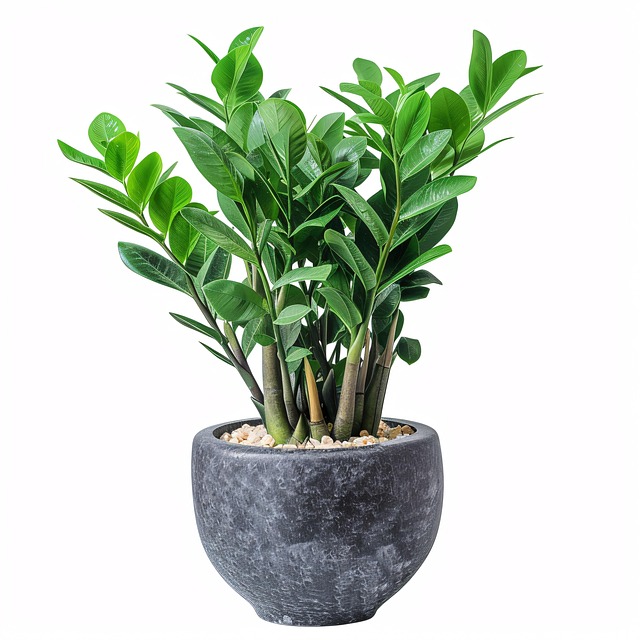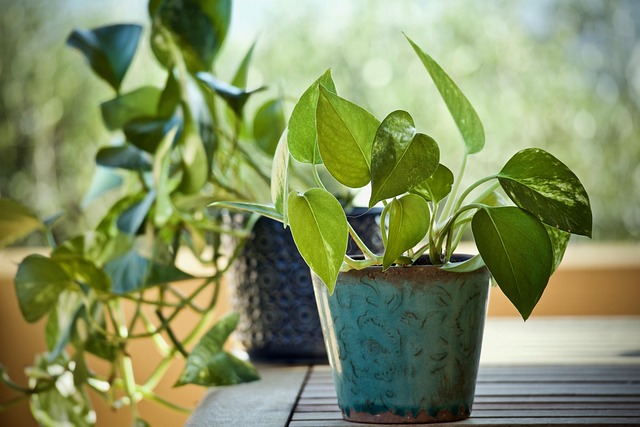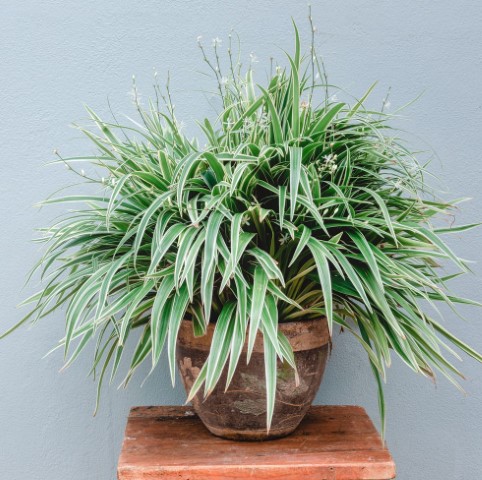10 Best Air-Purifying Indoor Plants That Thrive with Low Maintenance

Indoor plants do more than just brighten up your living space—they can improve air quality, reduce stress, and bring a touch of nature into your home. For those of us who aren’t blessed with a green thumb or simply don’t have the time for high-maintenance greenery, low-maintenance air-purifying plants are the perfect solution. Here’s a list of the 10 Best Air-Purifying Indoor Plants That Thrive with Low Maintenance. Let’s dive in!
1. Snake Plant (Sansevieria)
Why It’s Great: Known as “Mother-in-Law’s Tongue,” this striking plant with long, upright leaves filters out formaldehyde, benzene, and xylene from the air. It’s practically indestructible!

Care Tips: Water sparingly—once every 2-3 weeks is fine—and place it in low to bright indirect light. It thrives on neglect, making it ideal for busy folks.
Bonus: It releases oxygen at night, so it’s a fantastic bedroom companion.
Read More: Top Plants to Plant at Home in India
2. Peace Lily (Spathiphyllum)
Why It’s Great: With its glossy green leaves and elegant white blooms, the Peace Lily removes ammonia, trichloroethylene, and other toxins. It’s a natural humidifier, too!

Care Tips: Keep the soil slightly moist and place it in low to medium light. It’ll droop dramatically to signal when it’s thirsty—talk about low-effort communication!
Unique Fact: It’s mildly toxic to pets, so keep it out of reach of curious furry friends.
3. ZZ Plant (Zamioculcas zamiifolia)
Why It’s Great: This sleek, waxy-leaved beauty purifies air by removing volatile organic compounds (VOCs). Its resilience is unmatched.

Care Tips: Water every 2-4 weeks and place it anywhere from low light to bright indirect light. It can even survive in fluorescent-lit offices!
Fun Twist: Its nickname, “Eternity Plant,” hints at how long it sticks around with minimal fuss.
Read More: Sacred Trees, Plants and Fruit in Hindu Culture
4. Pothos (Epipremnum aureum)
Why It’s Great: Often called “Devil’s Ivy,” this trailing plant tackles formaldehyde and carbon monoxide while adding a cascading vibe to shelves or hanging pots.

Care Tips: Water when the soil feels dry (every 1-2 weeks) and keep it in low to bright indirect light. It’s forgiving if you forget it for a while.
Pro Tip: Variegated varieties like Marble Queen or Neon Pothos add a pop of color!
5. Spider Plant (Chlorophytum Comosum)
Why It’s Great: With its arching, grassy leaves, this plant is a champ at filtering out carbon monoxide and xylene. It’s also pet-friendly!

Care Tips: Water weekly or when the top inch of soil dries out. It loves bright, indirect light but tolerates lower light too.
Cool Perk: It produces “pups” (baby plants) that you can snip and propagate—free plants for friends!
Read More: 10 Ayurvedic Plants You Must Have At Home
6. Rubber Plant (Ficus elastica)
Why It’s Great: This bold, dark-leaved plant scrubs formaldehyde from the air and makes a stunning statement with its glossy foliage.

Care Tips: Water when the soil dries out (every 1-2 weeks) and wipe its leaves occasionally to keep them shiny. It prefers bright, indirect light.
Style Note: Its deep burgundy varieties are a trendy twist on the classic green.
7. Boston Fern (Nephrolepis exaltata)
Why It’s Great: This fluffy fern is a powerhouse for removing formaldehyde and adding humidity—perfect for dry indoor spaces.

Care Tips: Keep the soil consistently moist (but not soggy) and place it in indirect light. Mist it occasionally if your home is dry.
Fun Fact: It’s been a Victorian-era favorite, proving timeless appeal meets function.
Read More: Top Best 10 Air Purifying Plants Available in India
8. Areca Palm (Dypsis lutescens)
Why It’s Great: This feathery palm not only purifies air by removing toluene and xylene but also doubles as a natural humidifier.

Care Tips: Water when the top inch of soil dries out and place it in bright, indirect light. It’s a low-drama for a tropical vibe.
Design Hack: Its lush fronds make it a living room showstopper.
9. Dracaena (Dracaena spp.)
Why It’s Great: With varieties like “Lemon Lime” or “Warneckii,” this plant targets benzene, trichloroethylene, and more, its spiky leaves add architectural flair.

Care Tips: Water every 2-3 weeks and keep it in moderate to bright indirect light. It’s drought-tolerant and easygoing.
Heads-Up: Toxic to pets, so place it high if you’ve got nibblers at home.
Read More: 365 Days Flowering Plants in India
10. Aloe Vera
Why It’s Great: Beyond its air-purifying prowess (goodbye, formaldehyde!), Aloe Vera’s gel soothes burns and skin irritations—a plant with benefits!

Care Tips: Water every 2-3 weeks, letting the soil dry out completely between sessions. It loves bright, indirect light or even a sunny windowsill.
Quirky Charm: Its plump, spiky leaves give it a desert-chic vibe.
Why These Plants Matter
These 10 Best Air-Purifying Indoor Plants were handpicked not just for their air-cleaning abilities—backed by studies like NASA’s Clean Air Study—but for their knack for thriving with minimal effort. Poor air quality indoors can sneak up on us, thanks to furniture off-gassing, cleaning products, or even cooking fumes. Adding a few of these low-maintenance heroes can make a tangible difference without turning your home into a full-time gardening project.
Whether you’re a plant newbie or a seasoned enthusiast looking for easy wins, these air-purifying wonders fit the bill. Start with one (or two!) and watch your space—and your air—transform. Which one’s calling your name? Let me know how it goes!
Happy planting!
Frequently Asked Questions (FAQs)
1. What are air-purifying plants?
Air-purifying plants are indoor plants that can filter and remove toxins like formaldehyde, benzene, and carbon monoxide from the air, making your home healthier.
2. Do air-purifying plants really work?
Yes, studies (like NASA’s Clean Air Study) have shown that certain plants can remove harmful chemicals from the air. While they don’t replace air purifiers, they’re a great natural supplement.
3. Which air-purifying plant is easiest to maintain?
Snake Plant, ZZ Plant, and Pothos are among the easiest to care for. They tolerate low light and infrequent watering.
4. How many air-purifying plants do I need for one room?
For noticeable benefits, it’s recommended to have at least 1 medium-sized plant per 100 square feet.
5. Can air-purifying plants grow in low light?
Yes! Plants like Peace Lily, Spider Plant, and Philodendron thrive in low to medium light, perfect for indoor spaces.
6. Do these plants need a lot of water?
No. Most air-purifying, low-maintenance plants prefer their soil to dry out between waterings. Overwatering is often more harmful than underwatering.
7. Are air-purifying plants safe for pets?
Not all of them. Some, like Peace Lily and Snake Plant, are toxic to cats and dogs. Always check plant safety if you have pets at home.
8. How often should I clean the leaves of indoor plants?
Wipe the leaves with a damp cloth every 2–3 weeks to remove dust, which helps them breathe and purify the air more efficiently.
9. Do I need to fertilize air-purifying indoor plants?
Only occasionally. Most low-maintenance plants thrive with feeding once every 1–2 months during the growing season (spring and summer).
10. Can I grow these plants in offices or bathrooms?
Absolutely! Many air-purifying plants handle indoor environments well, including areas with artificial lighting and higher humidity like bathrooms.




